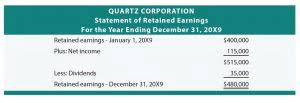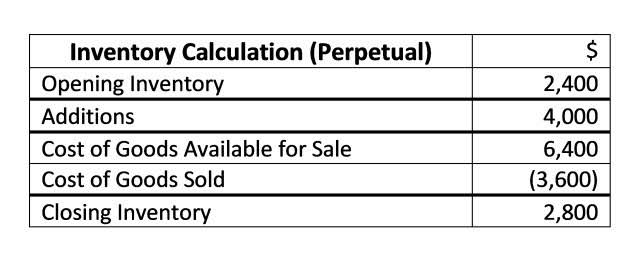13 Nov. 20
A consistent budgeting of terrestrial carbon fluxes Nature Communications

Feature (2) develops because the timescale of regrowth (sink of carbon flux, i.e. flux from atmosphere to land) is longer than that of clearing/harvest (source). The feature can be seen by comparing the orange and green crosses, representing the cumulative net LULCC flux for the period 1850–2014 in REG850 and REG1700 respectively, with the blue cross for REG1850 in Fig. The time series of all three historical uncertainty estimates (Fig. 1) shows the known feature of a peak in 1960 (Hansis et al., 2015; Friedlingstein et al., 2019). Before around 1960, the net LULCC flux is almost continuously rising and levels decrease after 1960 to the end of the historical LULCC dataset in 2014. Around 2000, the annual net LULCC flux is of similar magnitude to that in the early 20th century. SLAND,pi thus includes hypothetical land sinks, which in reality are lost due to historical ecosystem degradation.
1. Fine-Scale Carbon Bookkeeping Model
This brings our updated ELUC estimate closer to the other BKMs used in the GCB20,21 and to the multi-model average of the TRENDY simulations with fixed present-day carbon densities19 (Table 2). 29% (BLUE minus H&N21), whereas the difference to the TRENDY multi-model average (1.4 PgC yr−1) is reduced by 88% compared to the default BLUE setup. Typically, the two components of the terrestrial carbon budget—ELUC and SLAND—are estimated without considering impacts of environmental changes on the former and of land-use changes on the latter. We have resolved the resulting conceptual inconsistency in the terrestrial carbon budget by integrating transient environmental conditions into the bookkeeping model BLUE. Our study bookkeeping model suggests that effects of environmental changes, which are not considered in current carbon budgets, cause a 14% (8%, 23%) increase in ELUC globally over 2012–2021. This is crucial for correctly estimating the remaining carbon budget to limit global warming to 1.5 °C or 2.0 °C1,40.
- However, we expect this effect to be small, since several studies25,26 show that the IAV of the terrestrial carbon sink in semi-arid ecosystems is foremost attributable to soil dynamics (as opposed to vegetation dynamics).
- It only works if your company is relatively small with a low volume of transactions.
- Our framework provides the tool to quantify all relevant fluxes of the terrestrial carbon budget separately and in a spatially explicit way.
- They further find that the boreal coniferous forest is among the ecosystems with the largest difference in NEE anomalies between el Niño and la Niña periods.
- It should be noted that the extent of the LULCC areas in BLUE sometimes differs from the LUH2 input dataset, even for the nine main experiments, mainly because of a mismatch in PFTs between the LUH2 (harvest) input and the BLUE model.
- In the Hurtt et al. (2011) sensitivity study based on the LUH1 dataset (Chini et al., 2014), the authors analysed over 1600 simulations with respect to model “factors” like the simulation start date, the choice of historical and future agricultural land-use and wood harvest scenarios, and inclusion of shifting cultivation.
Tammas Loughran

Upon deforestation and wood harvest, this additional carbon is released and causes larger values of ELUC,trans compared to ELUC,pi. Assuming present-day environmental conditions for the whole simulation period (ELUC,pd), which is the current GCB approach, overestimates (underestimates) ELUC before (after) the date of the inventory-based carbon densities (around Accounting for Churches 1980; see Methods). Furthermore, the difference in net LULCC flux between high and low land-use scenarios is expected to be larger in DGVMs than in a bookkeeping model as they are influenced by a higher CO2 concentration exposure via the loss of additional sink capacity. In DGVM simulations, a higher CO2 exposure will most likely lead to larger vegetation and soil carbon stocks in the 20th century in low simulations as compared to high land-use simulations. The increasing number of transitions in the 20th century in the low land-use simulations will thus increase the difference in emissions between the two alternative scenarios. Another difference that can influence results comparing bookkeeping models and DGVMs is that the former approach uses constant (present-day) carbon densities, while DGVMs work with variable carbon densities which respond to environmental conditions.
Evaluating the near- and long-term role of carbon dioxide removal in meeting global climate objectives
There are some important differences between the TRENDY estimates and our BLUE results. First, the TRENDY results do not only include woody vegetation, but also herbaceous plants. Consequently, the IAV of the TRENDY estimates also includes dynamics of non-woody vegetation. However, we expect this effect to be small, since several studies25,26 show that the IAV of the terrestrial carbon sink in semi-arid ecosystems is foremost attributable to soil dynamics (as opposed to vegetation dynamics). Second, as mentioned before, our estimates do not include the LASC, as they are based on the present-day land cover distribution.
- Furthermore, ref. 16 compared their estimated IAV of woody biomass carbon with FAO estimates of forest carbon, showing that there is no systematic overestimation of IAV in the mentioned regions.
- The relative change due to neglecting gross transitions is similar across LULCC setups, and for REG1700net the cumulative net LULCC flux is reduced to 211 PgC.
- This means that the equilibrium biomass pools and all excess biomass pools are then re-initialized at each time step (annually) of the simulation from 2000 onward.
- Increased uncertainties in crop and abandonment before 1850 are largely related to uncertainties about the magnitude of shifting cultivation and the extent of agricultural areas described in the HYDE dataset.
- Neglecting harvest and its uncertainty results in considerably reduced sensitivity to total LULCC uncertainty for simulations started in 1700 and 1850 (not shown).
Carbon transfer in the default setup of BLUE

Properties of land-use areas and LULCC activities are first discussed in the baseline scenario (here called REG) and then differences in the high (HI) and low (LO) LULCC scenarios are compared. This study investigates the impact of LULCC uncertainties compared to other common uncertainties on modelling of LULCC fluxes with the bookkeeping model BLUE, like the representation of wood harvest and shifting cultivation. Next, we want to analyse the magnitude of legacy emissions at the end of the historical simulations in 2014 and how much they are affected by past LULCC uncertainty. The magnitude of the annual net LULCC flux is determined by the size of the disequilibrium pools, which aggregate information of past LULCC events. If these disequilibrium pools are similar between two setups in a given year and the upcoming LULCC events are identical, then the annual net LULCC flux in the following years will be similar as well.

Implementation of transient environmental forcing into BLUE

The LUH2 dataset uses agricultural data from the uncertainty range A of the HYDE product, an uncertainty range based on literature and expert judgement. For the LUH2 dataset, HYDE data are interpolated and combined with annual wood harvest data from the Food and Agriculture Organization (FAO) to provide annual states and transitions. A crossing point in the cumulative net LULCC flux between two scenarios can occur if the rate of LULCC varies differently with time in both scenarios.This can, for example, happen when the setups have a similar beginning and end distribution of land cover, as is the case in the LUH2 dataset. The simulation with initially larger number of LULCC activities produces an initially adjusting entries steeper increase of the cumulative net LULCC flux and a weaker increase towards the end, which can potentially imply a crossing point.

